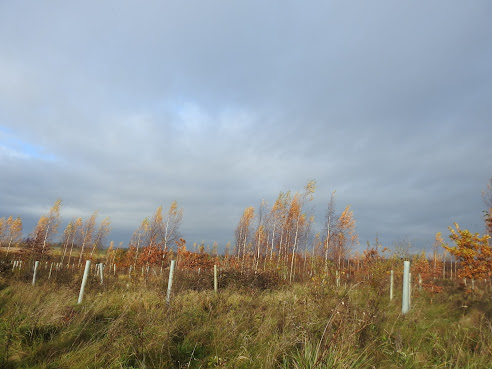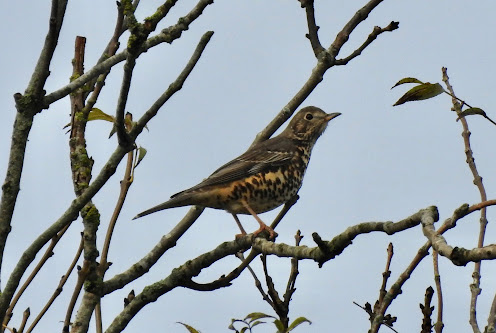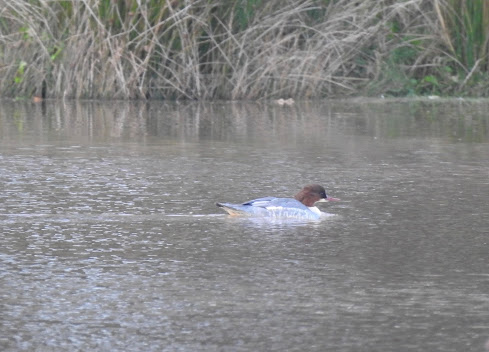Just occasionally a visit to the patch leaves you wondering why you bother. This morning was one of those days.
It started well enough, low cloud and a bit chilly. After about half an hour the faint mizzle in the air intensified. By the time we'd finished the cloud was low enough to obscure the top of Bannams Wood, and the mizzle had become drizzle and pretty relentless. All this meant it was a bit of a waste of time trying to photograph anything, and birding was constantly interrupted by the need to wipe spectacles and binoculars.
It was a pity the weather was so dire because there did appear to be quite a lot of birds about, if only you could see them. We estimated 160 Redwings, with smaller numbers of Song Thrushes, Blackbirds, and Fieldfares probably mostly from the continent and all intent on stripping hawthorn berries from the hedgerows before any potential Waxwings show up.
There was also the usual smattering of finches, but the only species in any numbers was Siskin which reached a creditable 50. The nearest flash was ice-bound and as far as we could see the only occupants were a few Teal.
One could get down-hearted, but back home in Winyates East at lunchtime fate dealt me an ace. A quality sofa-tick as I looked up to see a large white heron approaching from the north. I just had time to grab my bins and stumble to the window to see a glorious stately yellow-billed Great White Egret flying low over our cul-de-sac. I next grabbed the camera and sprinted to the back garden in the hope it would re-emerge. Sadly I was too late (or it had deviated from its southward course) because it didn't reappear.
Never mind, that's my 83rd garden tick in nearly twenty years of residence. My last had been a Ring-necked Parakeet in 2021. I spent an hour watching the birds which were actually in the garden and added a male Blackcap to the day tally.
Sometimes home is best.


.jpeg)
.jpeg)

.jpeg)

















.jpeg)












